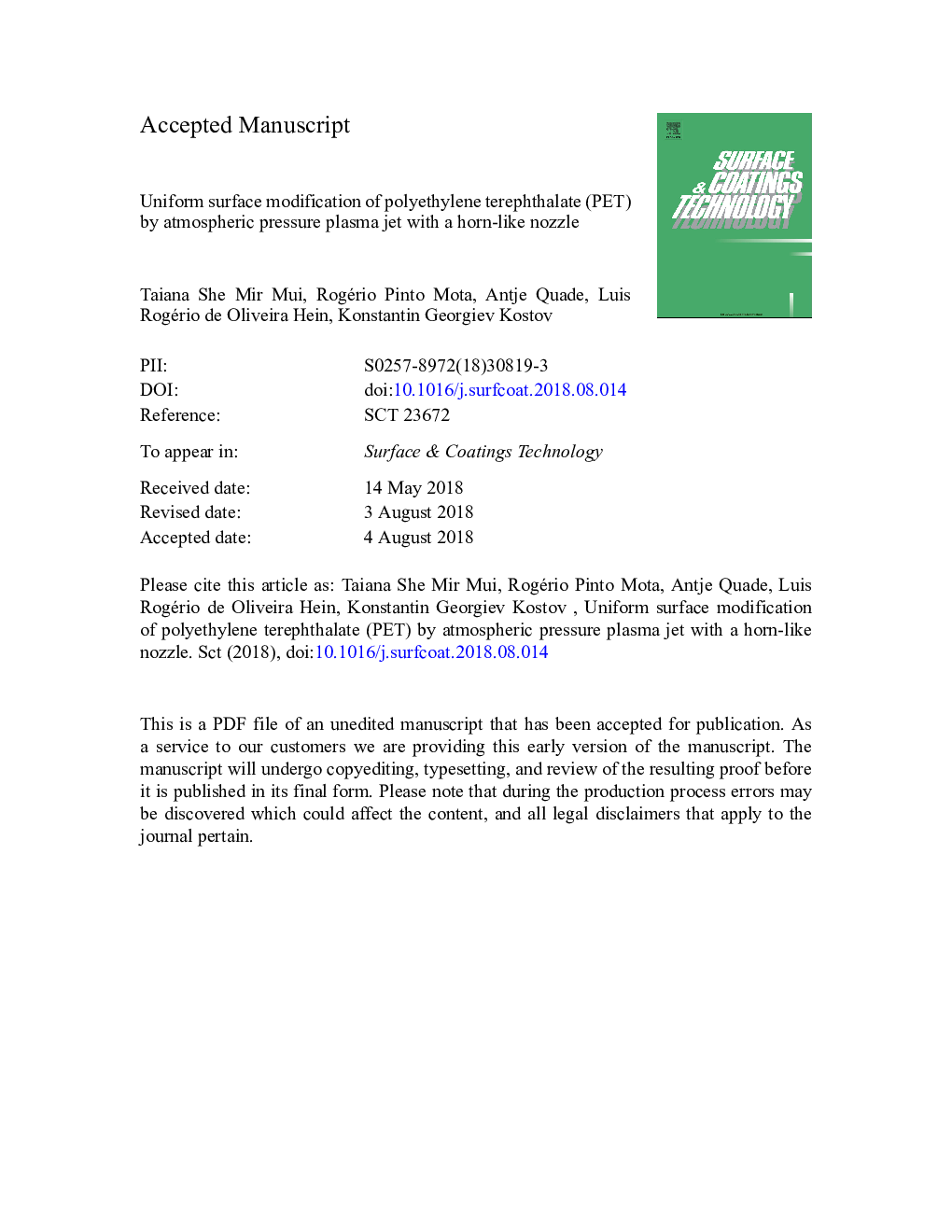| Article ID | Journal | Published Year | Pages | File Type |
|---|---|---|---|---|
| 8023211 | Surface and Coatings Technology | 2018 | 34 Pages |
Abstract
This work reports on surface modification of polyethylene terephthalate (PET) polymer by an atmospheric pressure plasma jet (APPJ) operated with argon. A distinguishable feature of this device is that it terminates with a conical horn-like nozzle. Three different nozzles diameters were employed with the purpose to obtain uniform surface modification over large area. Treatments in small 3D objects that fit inside the conical horn were also conducted. In this study, water contact angle (WCA) measurements and X-ray photoelectron spectroscopy (XPS) were performed to assess the samples wettability and the surface elemental composition, as well as, their radial distribution. Plasma-induced changes on the polymer surface morphology were evaluated by Atomic Force Microscopy (AFM). Electrical characterization of the plasma and investigation of the effect of the gas flow rate on the discharge power were carried out. After the plasma treatment PET surface became more hydrophilic over the entire area covered by the nozzle. This effect is caused by the incorporation of oxygen containing polar groups on the surface. It was also observed that depending on process parameters, the plasma treatment can extend even outside the area of the conical horn. The degree of surface modification depends on plasma dose while the treatment uniformity is determined mostly by the distance to the sample. Overall, a quite uniform surface modification was obtained over the entire area covered by the jet nozzle. Thus, the results suggest that by simply changing the jet geometry and choosing the right treatment parameters one can achieve a uniform treatment over an area whose size is determined by the horn diameter.
Related Topics
Physical Sciences and Engineering
Materials Science
Nanotechnology
Authors
Taiana She Mir Mui, Rogério Pinto Mota, Antje Quade, Luis Rogério de Oliveira Hein, Konstantin Georgiev Kostov,
